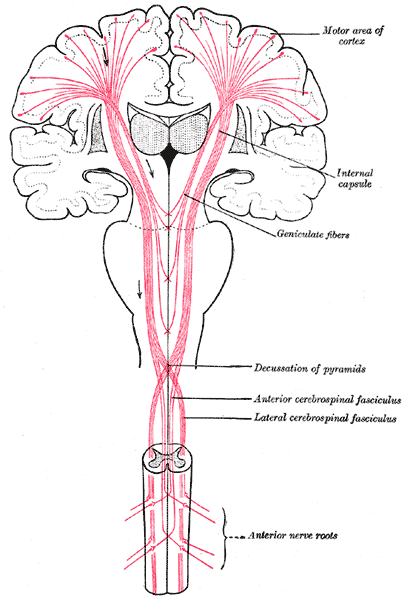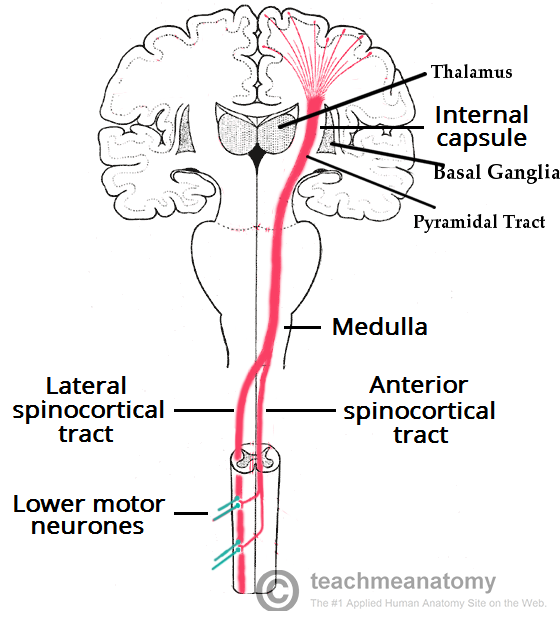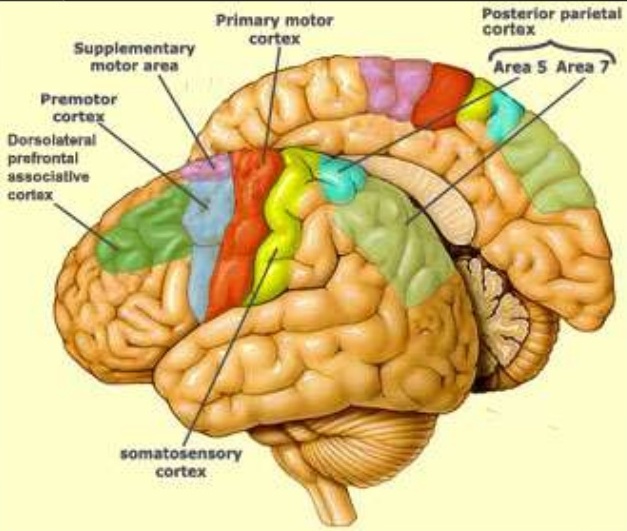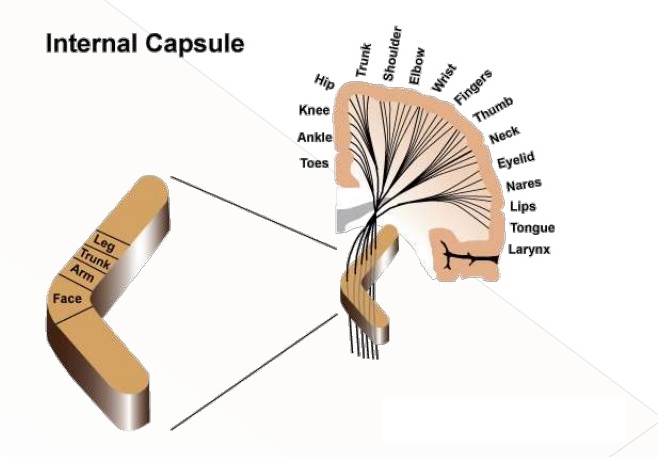Pyramidal Tracts
Definition
They are aggregations of efferent nerve fibers
Named pyramidal tracts because they pass trough the pyramids of the medulla
Origin
The efferent nerve fibers originate in the upper motor neurones in the cerebral cortex
Extent
They extend from the cerebral cortex to the spinal cord or to the brain stem
The ones that end in the brain stem are called corticobulbar tract
The ones that end in the spinal cord are called corticospinal tract
Function
The pyramidal tracts are involved in the control of motor functions of the body.
The corticobulbar tract conducts impulses from the brain to the cranial nerves which control the muscles of the face and neck and cause facial expression, mastication, swallowing
The corticospinal tract conducts impulses from the brain to the spinal cord - consists of lateral and anterior tracts - involved in voluntary movements.
Decussation
The majority of the fibers of the corticospinal tract cross over to the other side in the medulla - hence muscles are controlled by the opposite side of the brain.
Myelination
Incomplete at birth
Myelination starts and progresses in the caudo-cranial direction and is completed by twelve years of age.
Structure
Corticospinal tract
The axons of the upper motor neurons (nerve cells of the brain) extend down to the spinal cord or brain stem. The axons form the tract.
At the end, the axon synapses with (forms a junction) lower motor neurons in the spinal cord or brain stem (cranial nerves) either directly or through interneurons
30 % axons from primary motor cortex (area 4)
30 % from premotor area and supplementary motor cortex
40 % from the somatic sensory area
The fibers descend as a art of corona radiata, pass through internal capsule, through brainstem and form pyramids in the medulla
At the lower part of medulla 90% cross in the midline to reach opposite side
Form two separate tracts consisting of crossed fibers and uncrossed fibers (Lateral corticospinal tract & Anterior corticospinal tract respectively )
Descends in the lateral white funiculus of opposite side
Terminate in the internuncial neurons of spinal grey matter
Internuncial neurons synapse with motor neurons in anterior horn cells
Some fibers end directly on the AH cells
Axons of AH cells supply skeletal muscle through spinal nerve
Corticobulbar tract
Fibres originate from the ventral motor cortex
Pass through internal capsule
The fibers cross to the opposite side at various levels of the brainstem
Terminate in the midbrain, pons and medulla oblongata
Synapse with the motor nuclei (neurons) of the cranial nerves which supply muscles of the face.
UMN : - neurons giving origin to pyramidal tract
LMN : - neurons on to which the pyramidal tract axons end and synapse
Applied anatomy
Lesions of the pyramidal tract produce paralysis of concerned muscle group for example hemiplegia
Commonly vascular lesions involving the internal capsule produce larger paralysis since the axons converge onto internal capsule to go through it.
* * * * * * * * * * * * * *
Extra pyramidal tracts
Descending tracts other than pyramidal tract are called extra pyramidal tracts
Rubrospinal tract - facilitate flexor muscles and inhibit extensor muscles (coordination) - alternate route of pyramidal tract
Vestibulospinal tract - adjusts postural muscles to linear acceleration - facilitates extensor muscles and inhibits flexor muscles
Reticulospinal tract - muscle tone, respiration, vascular caliber, antigravity muscles posture
Tectospinal tract - turning head and moving arms in response to visual or other stimuli
Olivospinal tract - controls reflex muscle activity
Medial longitudinal fasciculus - harmonious movement of eye and neck
* * * * * * * * * * * * * *







